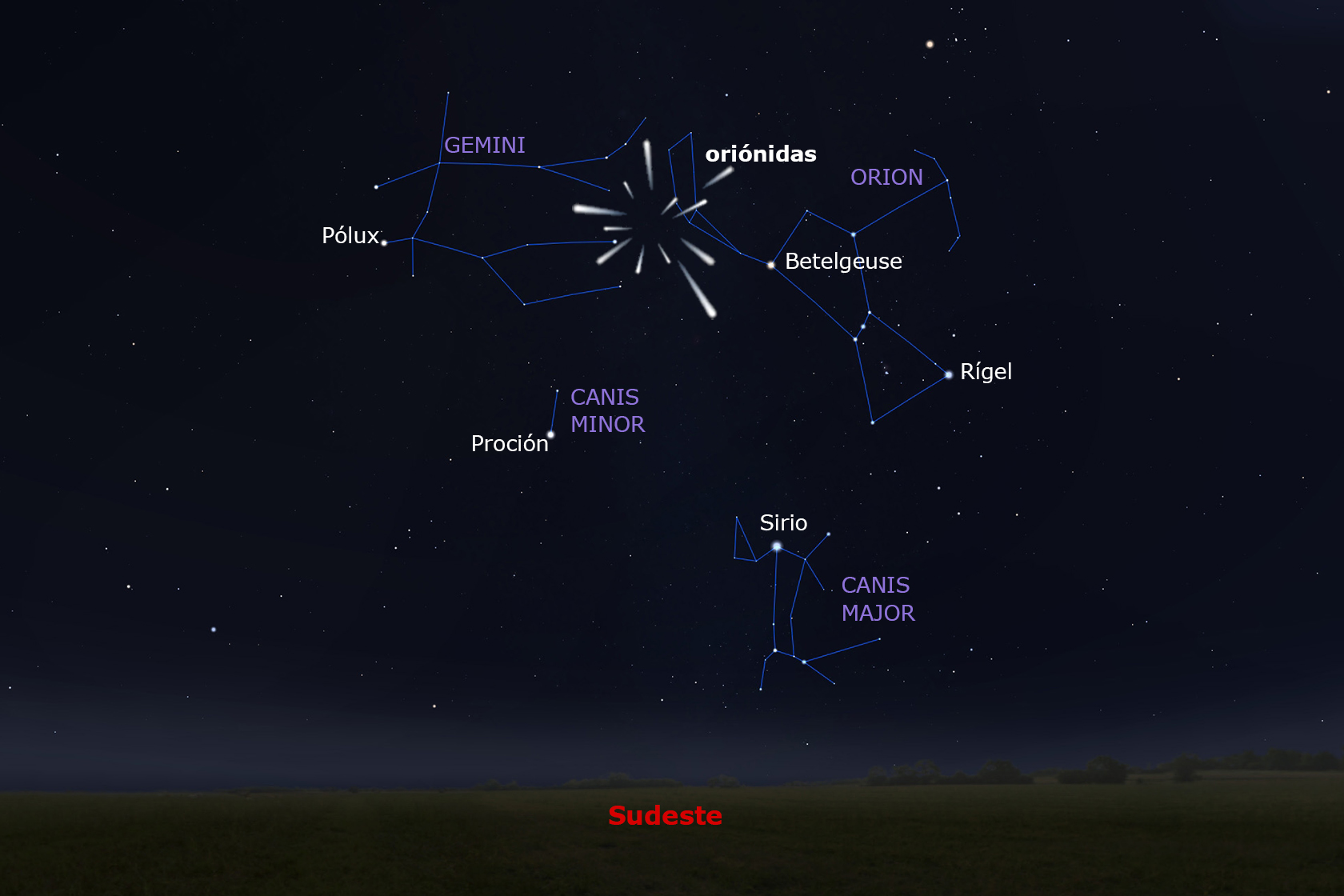Oriónidas
La lluvia de las oriónidas es una lluvia de meteoros (comúnmente llamados "estrellas fugaces") que sucede todos los años entre el 2 de octubre y el 7 de noviembre.
Las oriónidas son una lluvia de meteoros de actividad moderada, tiene una tasa de actividad de entre 15 y 70 meteoros por hora y una alta velocidad, 66 kilómetros por segundo. Tras las oriónidas, las siguiente lluvia importante de meteoros serán las gemínidas en el mes de diciembre, con una tasa de actividad de entre 100 y 140 meteoros por hora.
Para observadores a nuestras latitudes, 40º norte, el radiante de las oriónidas se sitúa por encima del horizonte desde la medianoche hasta el amanecer.
¿Qué se espera en 2025?
En el año 2025 el pico de esta lluvia coincidirá con la Luna nueva, el día 21 de octubre. La noche del 20 al 21 será propicia para su observación.

El cometa Halley, observado desde la Tierra en 1986.
¿Por qué suceden?
Los meteoros de las oriónidas son fragmentos del cometa 1/P Halley. El Cometa Halley orbita alrededor del Sol cada 76 años y fue visto desde la Tierra por última vez en 1986. Como todos los años por estas fechas, la Tierra atraviesa un anillo poblado con los fragmentos desprendidos del cometa Halley. Cuando uno de esos fragmentos (o meteoroides) entra en contacto con la atmósfera terrestre, se calcina por la fricción con el aire creando así el resplandor luminoso que conocemos como meteoro o estrella fugaz. El cometa Halley también es el origen de otra lluvia de meteoros, las eta acuáridas, que tienen su máximo en torno al 6 de mayo.
Las lluvias de meteoros parecen surgir de un único punto, es el denominado radiante. Las oriónidas reciben ese nombre debido a que su radiante se ubica en la famosa constelación de Orión, la cual comienza a ser visible alrededor de la medianoche en dirección este.

El 'radiante' de las oriónidas
¿Qué hacer para ver las oriónidas?
El lugar de observación puede ser cualquiera con tal de que proporcione un cielo oscuro. Es preferible observar desde un lugar que tenga pocos obstáculos para la vista (como edificios, árboles o montañas), y no utilizar instrumentos ópticos que nos limiten el campo de visión. Aunque las oriónidas parecen venir de la constelación de Orión (de ahí su nombre), se pueden ver en cualquier parte del cielo. Conviene dirigir la mirada hacia las zonas más oscuras, en la dirección opuesta a la posición de la Luna si la observación se realiza cuando esta esté presente. Lo más cómodo es tumbarse y esperar a que la vista se acostumbre a la oscuridad.

